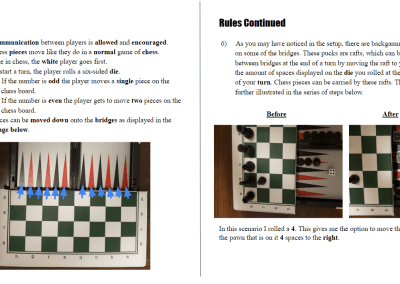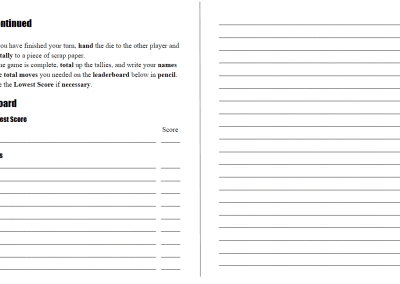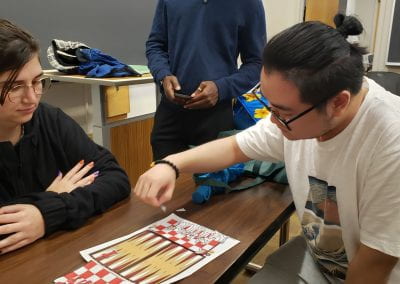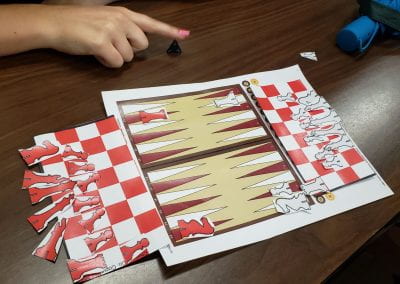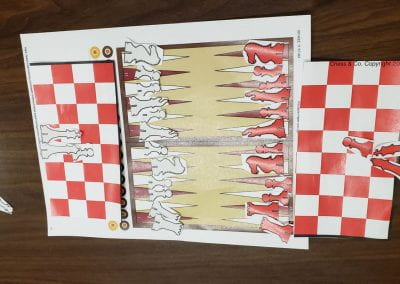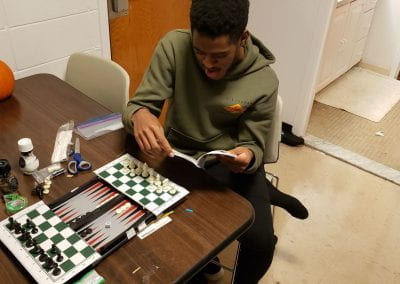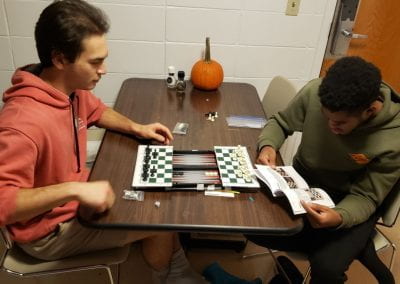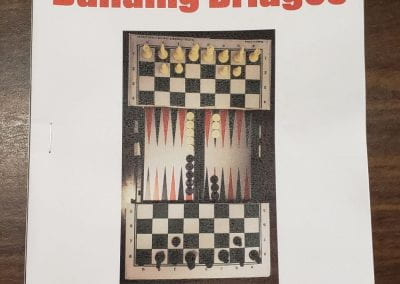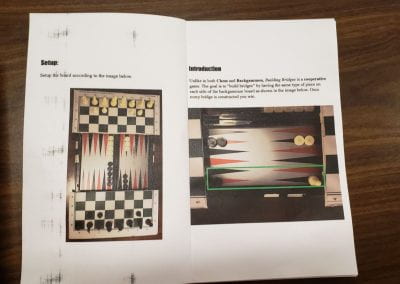Rules:
Click on the gallery to view the rulebook in full size
Artist Statement:
The main thing that inspired me to appropriate chess is Yoko Ono’s White Chess. I loved how just changing the color of the pieces she could turn a war game into a protest of the Vietnam War. I wanted to do something similar with my work, I wanted to turn the competitive atmosphere around chess on its head to make a game about cooperation and building relationships. While thinking about chess I was reminded of Backgammon. I remember a lot of the boards I played chess on as a kid had a backgammon board on the back. I never learned how to play, but I always thought they looked like bridges. This reminded me of the idiom “build bridges, not walls,” which would inspire me to use the backgammon board as a bridge between the two sides of the chess board. The players would have to work together to make the pieces on each side of all the bridges match in as few turns as they could (chess pieces move the same way they do in a normal chess game). I playtested this iteration and found what the players did to be really repetitive and boring. Because all pawns moved forward the simplest way to win was just to move the pawns forward until all the bridges were filled with just pawns. I realized this pretty early on in the playtest, so I introduced a die the player had to roll (in this case I used a four-sided die). They would roll at the beginning of each turn to decide how many pieces they could move that turn. While this did cut down on the repetitiveness of the game, it caused another problem. Since the die numbered 1-4, if a player rolled a bunch of ones, the other player would finish first and then just have to wait around while their teammate figured it out. Furthermore, at this point, it did not feel like chess and backgammon combined. It was just a weird take on chess with a backgammon board slammed in the middle. To fix these issues before the final presentation I implemented new rules and mechanics. I added the pucks from backgammon, which could be moved by rolling a die (a six-sided die this time). These pucks would act as rafts, and they could carry pieces from the bridge the raft was on to a bridge to the right. This allowed for new strategies and made it harder to make a mistake that would lose the players the game outright. Furthermore, the die roll also displayed how many pieces the player could move, but in this case, if the number was even they got to move two pieces and if the number was odd they got to move one piece. This change made the die serve more than one purpose and decreased the time players spent waiting for their teammates to move. Finally, I made a rulebook with lots of pictures to clearly communicate the rules of the game to the players. In this rulebook, I added a scoreboard so players see how they did compare to other teams.
Initial Playtest Photos:
Final Playtest Photos:


